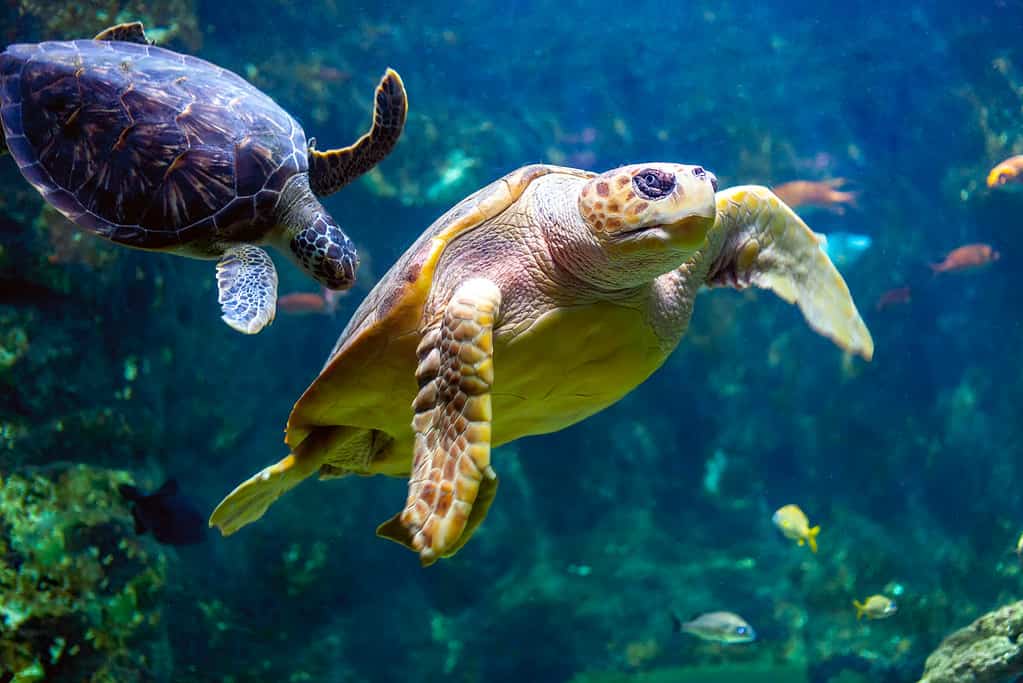Aquatic animals use their flippers primarily for propulsion, rotation, and control in the water.
Flipper Meaning
The flipper is a broad, flat appendage used for movement. It is attached to aquatic vertebrates, such as sea turtles, penguins, and seals. These limbs come in two or four and are used for swimming and other general movements. They can be referred to as forelimbs in animals with two flippers. But animals with four flippers can have distinguishable terms, such as fore-flippers and hind-flippers. And flippers can also be called fins in certain instances.

The Archelon turtle measured up to 13.1 feet from nose to tail and 16 feet wide from one flipper tip to the other.
©Guido Benedetto/Shutterstock.com
Flipper Pronunciation
You pronounce flipper as [fli | pr].
Flipper Example
Penguins have flippers, but they are called wings. And we sometimes say they “fly” underwater. Other examples of animals with flippers include dolphins, whales, manatees, dugongs, walruses, seals, and sea turtles. There are also extinct species that featured flippers, such as the plesiosaurus, mosasaurs, metriorhynchids, and ichthyosaurs. Animals that have webbed feet, where the digits are apparent, do not have flippers. Instead, they are called paddles. For example, the forefeet of some turtles.
Flipper Uses
Aquatic animals use their flippers primarily for propulsion, rotation, and control in the water. Cetaceans, like whales and dolphins, use their flippers primarily for control due to the position of the appendages in front of their center of mass. Humpback whales have tubercles on their flippers, which allows for better hydrodynamics. They can essentially grip the water and turn at sharp angles.
The fore-flippers of pinnipeds, such as seals and walruses, are used for turning. They have better maneuverability than cetaceans, but their movements are still inferior to fish.
Flipper: Animal Behavior
Researchers once believed that flippers were not used in similar ways to the legs and arms of terrestrial beings. But newer research sheds light on the behavior of flipper-possessing animals. For instance, sea turtles have been observed holding jellyfish, rolling scallops on the sea floor, and ripping an anemone loose. And this behavior is not new, ancestral turtles most likely behaved in similar ways millions of years ago.



